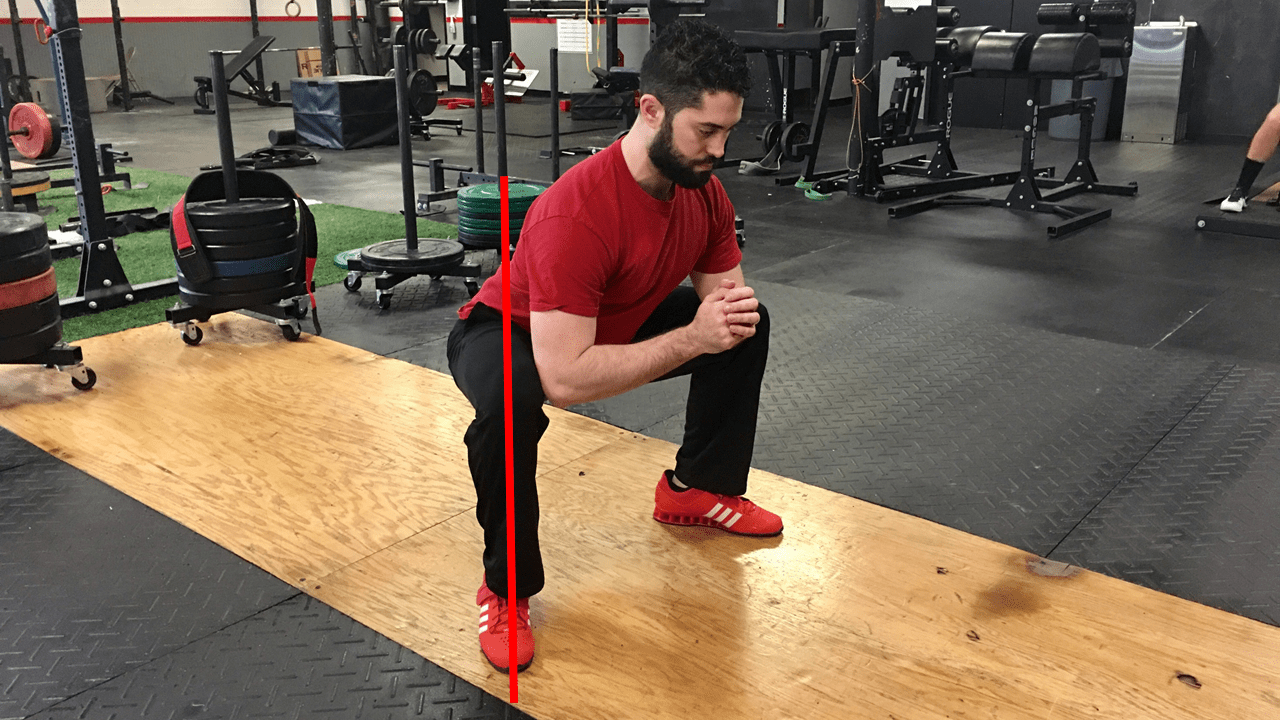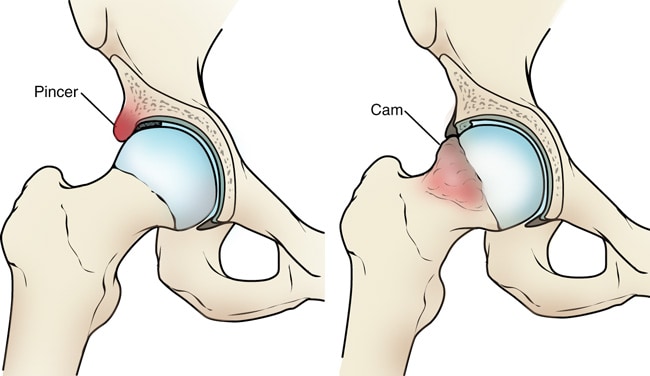Hip pain while squatting is one of the most annoying injuries for the barbell athlete. Fortunately, with the tips listed below, you’ll learn how to finally rid your hip pain during squats! For an even more thorough, in-depth analysis check out our Ultimate Guide to Hip Pain During Squats!
Many lifters often experience deep hip pain with squats, specifically at the bottom portion of the lift. This post will provide you with both the knowledge and tools on how to tackle this annoying issue!
Femoroacetabular Impingement (FAI)…What’s the Deal?
Femoroacetabular Impingement (FAI) is a condition where the hip bone or pelvis is abnormally shaped, causing pain when you move your hip into flexion. However, a review by Frank et al. (2015) showed that up to 50% of athletes with NO PAIN had FAI development on x-ray analysis. So this goes to show you that FAI doesn’t necessary mean pain. It can though if you’re squatting with a form that isn’t optimized for your body.
Traditional physical therapy has a simple solution for FAI: make sure to keep your squats shallow, or don’t squat at all! I’m here to tell you there are a few quick fixes you can make to eliminate your hip pain from squats without giving up such a vital exercise .
Tip 1: Push the Knees Out to Be In Line with the Toes
This seems to be the biggest mistake I see with squatting. Either people are not pushing their knees out far enough (creating a valgus stress) or they’re pushing them out TOO much (creating a varus force)!
Both circumstances create abnormal forces on the knee. Pushing the knees out to be in line with the foot not only engages more hip musculature to allow you to lift more weight, it changes the position of the hip so you can reduce that feeling of hip impingement.

Tip 2: Front Squat During Flare Ups
Sometimes pushing the knees out during back squats is not enough to reduce hip pain from squats. In that case, temporary substituting in front squats instead of back squats is a good alternative until your hip calms down.
The decreased hip angle associated with front squats allows more room for the hip to “breathe” and for the pain to subside. Front squat until the anterior hip pain subsides and then slowly resume back squatting, making sure to push your knees out!
Tip 3: Don’t Aggressively Stretch Your Hip Flexors
Just because something hurts, doesn’t mean you should stretch it. This, however, seems to be a natural tendency because it does provide some temporary relief.
Deep anterior hip pain with squatting is generally NOT caused by tight hip flexors. Aggressively stretching your hip flexors might just contribute to the pain. In fact, you may be better off strengthening them instead!
Tip 4: Work on Core Stability and Posterior Pelvic Tilt Strength
Squats and deadlifts are GREAT stability exercises. They are considered anti-flexion spinal exercises because they teach you to stabilize your core by NOT allowing it to flex (or round) forward.
By training the anti-extension aspect of the core by utilizing exercises such as dead bug progressions, hollow-body holds, and hip thrusts, you can effectively strengthen the core and legs without flaring up your hip.
Conclusion
Optimizing your squat form is BEST way to avoid anterior hip pain while squatting. Aggressively stretching the hip flexors may cause temporary relief, but in the long run this may actually exacerbate the issue. Also, incorporate front squats if you are flared up, and make sure to do you anterior core stability and hip thrusts to optimize pelvic alignment. Utilize these tips to avoid anterior hip pain from squats!

